All images by Zachary Tang unless otherwise stated.
Constructive discussions on faith and ethnicity can be tough when folks lack an understanding of cultural practices. So for this entire month, we’re exploring the history and use of religious artefacts across different religions in Singapore.
After looking into how Hindu devotees connect with God, we now examine the iconography involved in Christianity and Catholicism.
When we think of Christian art and iconography, the intricate frescos in the Sistine Chapel, or sprawling paintings like Cranach the Elder’s Altarpiece at Wittenberg, might come to mind. But religious items and articles, owned by individual devotees and meant for everyday use, are wrought with the same degree of care and beauty, and possess as much symbolic power.
RICE speaks with Friar Aiden Peter, OFM (Order of Friars Minor), a Franciscan Friar of the Custody of Saint Anthony, as well as Bishop Terry Kee, Vice President of the National Council of Churches of Singapore, to learn more about the use and history of religious items in Catholicism and Protestantism, respectively.
Catholicism
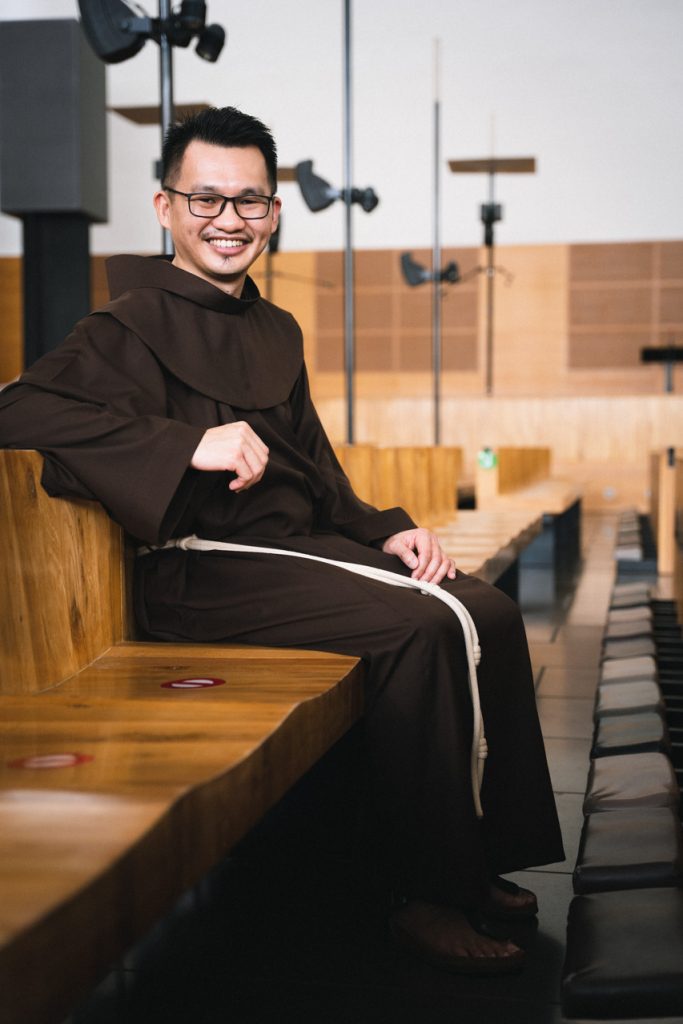
What is a rosary?
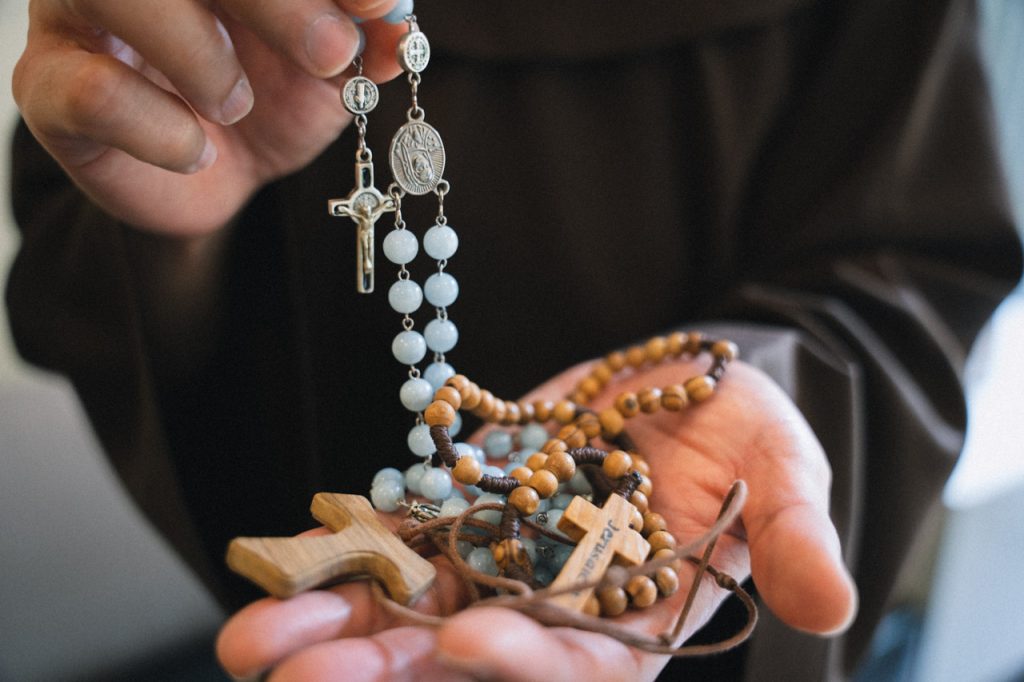
The Rosary is a Scripture-based prayer. The repetition in the Rosary is meant to lead one into restful and contemplative prayer related to each Mystery. The gentle repetition of the words helps us to enter the silence of our hearts, where Christ’s spirit dwells. The Rosary can be prayed privately or with a group.
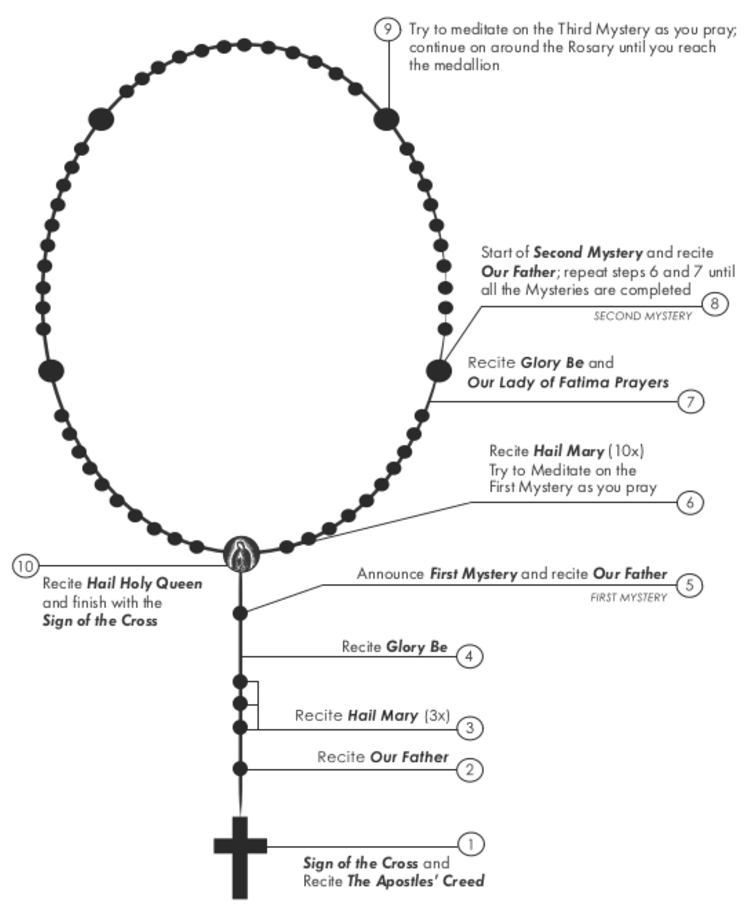
How did this practice come about?
It is commonly held that in 1208 St. Dominic de Guzmán (founder of the Dominican Order) received a heavenly vision of the Blessed Mother, who instructed him to spread a new devotion called the Rosary. Ever since then, St. Dominic and his Dominican religious order have been associated with the invention of the Rosary and its spread throughout Europe.
The Rosary remains a staple of Roman Catholic piety and is one of the most cherished and venerated prayers around the world.
Do all Catholics wear the rosary?
The rosary is an expression of piety closely tied to the Church’s sacramental life. Paragraph 1676 of the Catechism of the Catholic Church expresses the following about the practice of pious devotions (e.g., the rosary): “The piety of the people is a storehouse of values that offers answers of Christian wisdom to the great questions of life. It creatively combines the divine and the human, Christ and Mary, spirit and body, communion and institution, person and community, faith and homeland, intelligence and emotion.”
Because of its great blessings, Catholics everywhere have found multiple ways to keep the rosary near them at all times, whether that be in their purse, on their car’s rear-view window or as a bracelet or rosary ring.
Where can I get a rosary?
You can buy rosaries from Catholic religious article shops in Singapore. Alternatively, you can order rosaries online. The price can range from as low as $2 to above $100, depending on the materials.
After you buy a new rosary, many will bring it to a priest to have it blessed. The priest will say, “To the honour and glory of Mary, the Virgin Mother of God, in memory of the mysteries of the life, death and resurrection of our Lord, the same Jesus Christ, may this crown of the most holy Rosary be blessed and sanctified in the name of the Father, and of the Son, and of the Holy Spirit”.
Alternatively, the priest would use the following short blessing formulary: “May this (name of religious article, e.g., cross, rosary, etc.) and the one who uses it be blessed, in the name of the Father, and of the Son and of the Holy Spirit. Amen”.
What is a Tau cross?
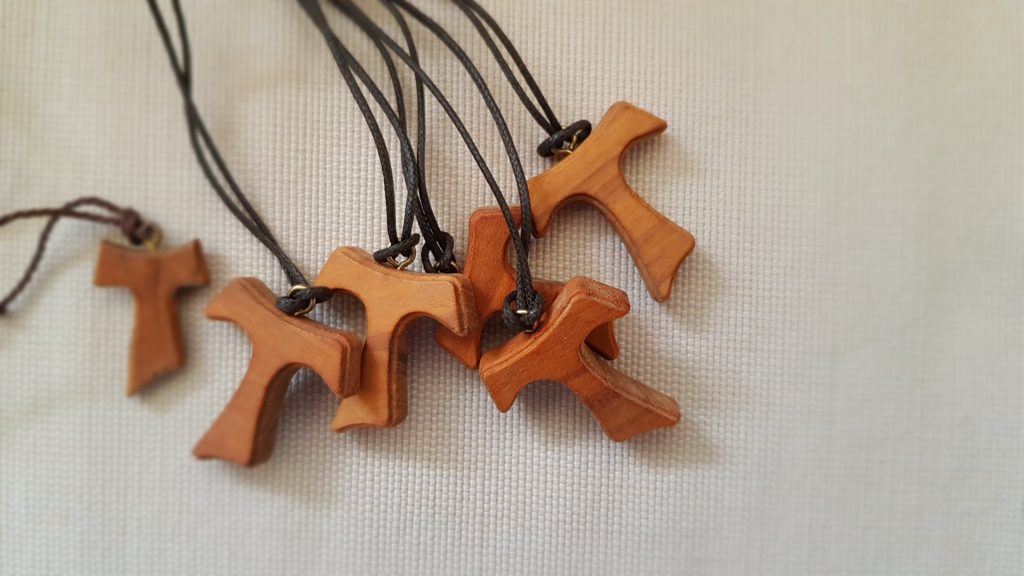
The Tau cross resembles the crucifix and is often associated more specifically with the Franciscan order. But the Tau is based on Hebrew, so most may not recognize it, whereas more people are familiar with the crucifix as a Christian symbol.
“Tau” is the last letter of the Hebrew alphabet and was used symbolically in the Old Testament. It was already spoken of in the Book of Ezekiel and is also closely associated with the Greek alphabet’s last letter, which is Omega.
That reminds us that Christ is the beginning; he is the end, as it appears in the Book of Revelation 21:6; 22:13: “I am the Alpha and the Omega, the beginning and the end. To the thirsty I will give water without price from the fountain of the water of life. I am the Alpha and the Omega, the first and the last, the beginning and the end.”
The Christians adopted the Tau because its form reminded them of the Cross on which Christ was immolated for the salvation of the world.
Where can you buy a Tau cross?
Like the rosary, Tau cross prices vary, depending on what they are made of; they are easily available in shops that sell religious articles.


What about statues of Saints?
A lot of people will have a dedicated space in their homes where they place statues of saints. These statues remind them of the great deeds done by the saints and renew their devotion to these saints.
But no, there’s no worshipping. Christians who pray before statues do so to honor God or the saints, praying to the person “behind” the image rather than the image itself. A Christian is not bound to the statue. It is simply a representation of God (or a saint) and is a material object that is shown respect to.
Another way to put it is that statues are holy reminders of various saints and of God. They remind us of heavenly things. Statues are instruments, tools to be used in the spiritual life and not ends in themselves.
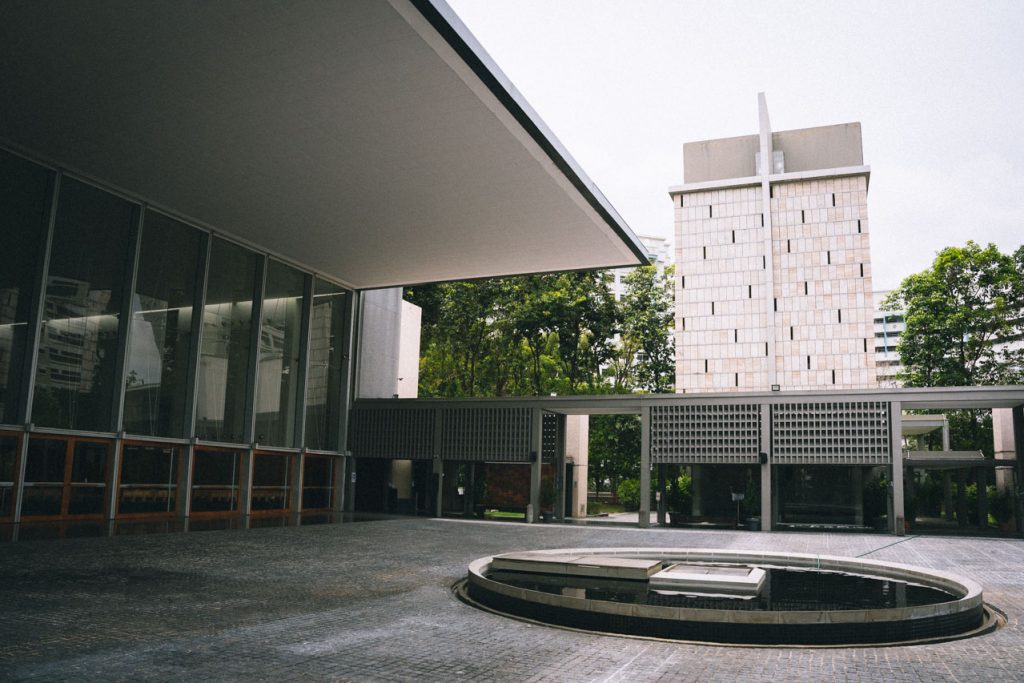
What about relics?
Relics include the physical remains of a saint as well as other objects which have been “sanctified” by being touched to his body. They’re categorised into three classes. Namely, First Class Relics (these are bits of the mortal remains of saints, e.g., bone, flesh, a drop of blood, or even hair), Second Class Relics (these are items of clothing worn by the saint or items used by the saint) and Third Class Relics (these are items that a saint touched or that have been touched to a first- or second-class relic of a saint).
If you go to the Basilica of St Anthony of Padua in Italy, you would be able to see the incorrupt tongue of St Anthony. In Assisi, Italy, you would be able to find the remains of Saint Francis of Assisi kept in the crypt under the main altar in the Basilica.
Here, in our Custody (Custody of St Anthony) we have fragments of bones of St Francis of Assisi and St Anthony of Padua.
Just like these statues, relics remind us of the exemplary lives of the saints which can give us much encouragement when facing struggles of our own.
Where do you obtain relics?
You won’t be able to obtain relics in any of the religious shops!
One would have to write to the Congregation for the Causes of Saints in Rome. They’re the official source in obtaining a relic.
We place requests for relics of Saint Francis of Assisi and Saint Anthony of Padua since our Custody’s patron saint is Saint Anthony, and Saint Francis is the founding father of the Franciscan Friars.
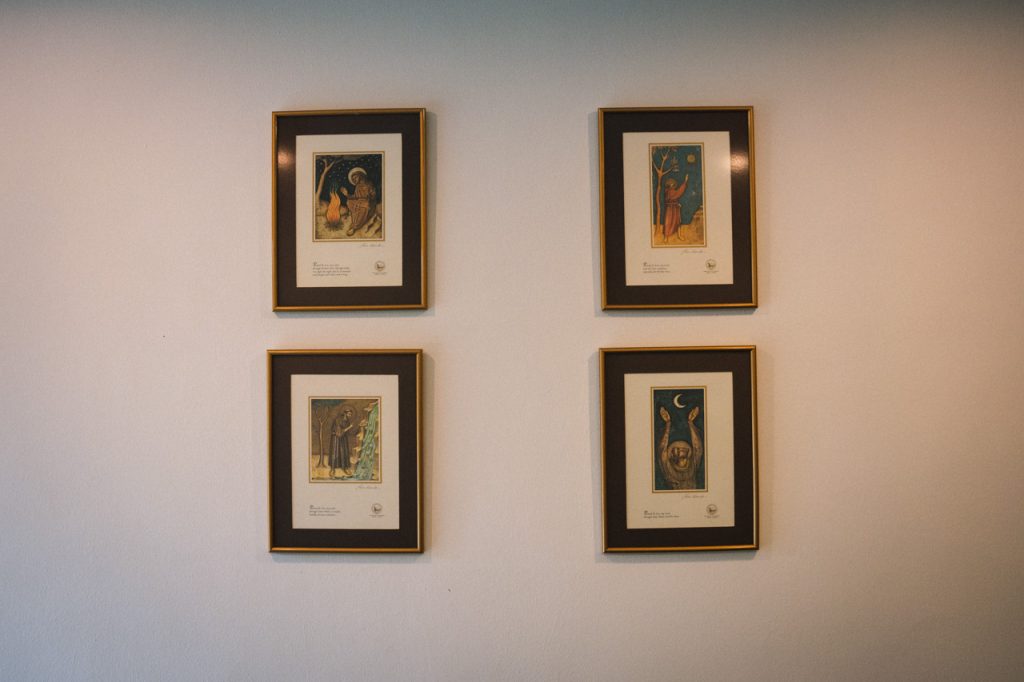

Protestantism
All images courtesy of the National Council of Churches of Singapore.
The interview has been lightly edited for structure and clarity.

What are some religious articles or items common to Protestant Christians?
In Protestant Christianity, it is common for Christians to place a cross by or at the entrance of their homes and Bible verses in their homes. Some Christians may wear or carry crosses around with them as a reminder or identification of themselves as Christians.


Do all Christians follow this practice?
Not all Christians adhere to this practice due to various differences in theological understanding and conviction of different denominations. One of the main concerns of all Christians is that these objects should not become idols for adoration and praise.


Where can we obtain these religious items?
It is usually available for purchase from Christian book and gift shops. The cost varies from a few dollars to a few thousand, depending on the material, craftsmanship, handcrafted or made by machine, etc.


Do these articles need to be blessed before we use them?
As we wear them mainly as reminders and identifiers, there is no need for consecration or blessings before use.

How did this practice come about?
In the early days of Christianity, there were some who believed that, similar to the idea of amulets, the cross offers the wearer protection from evil.
It is not known exactly when and how the practice came about but they are written evidence of the practices in writing and paintings dating back to as early as the 2nd Century CE. For example, Syrian Christians hung a Christian cross on the eastern wall of their house and prayed in that direction as early as the 2nd Century.
However, after the Reformation in the 16th Century, there was no need to have charms or amulets anymore because of our belief that Christ is with us, even to the ends of the world, as he promised.
So, for protestant Christians, the cross that we wear or hang in our homes now serves as a reminder to ourselves and an identifier to others that we are Christians. We are carrying the cross of Christ as he commanded us to.
As seen above, the tradition and history of Christian religious artefacts are unusually wide and diverse because there are two major denominations of Christianity—namely, Catholicism and Protestantism. Having said that, the use of religious items in both denominations ultimately leads to the same destination: reminding the devotee that they are a Christian, a child of God.
Tell us what you thought of this story at community@ricemedia.co. And if you haven’t already, follow RICE on Instagram, Spotify, Facebook, and Telegram.






